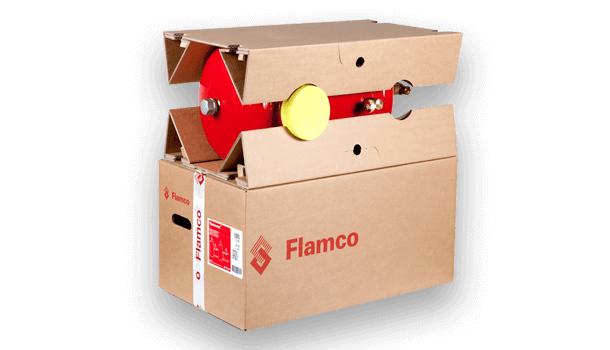Eco-Friendly Practices: Driving Change with Bulk Container Recycling
Eco-Friendly Practices: Driving Change with Bulk Container Recycling
Blog Article
Efficient Industrial Recycling Solutions for Lasting Packaging: A Comprehensive Guide
That's where this detailed guide on efficient commercial recycling solutions for sustainable product packaging comes in. By discovering crucial areas such as packaging product choice, making for recyclability, applying recycling framework, working together with reusing partners, and monitoring and gauging recycling success, this guide will outfit you with the expertise and devices essential to make educated decisions and drive favorable adjustment within your company. Whether you're a product packaging specialist, sustainability manager, or simply interested in the subject, this overview will provide beneficial understandings and techniques to help you browse the world of lasting packaging.
Packaging Product Choice
The option of packaging products plays a vital function in guaranteeing the sustainability of commercial reusing solutions. The selection of products is key in lessening environmental effect and making the most of recycling efficiency when it comes to lasting product packaging. Choosing the appropriate products can help in reducing waste generation, preserve sources, and promote a circular economic climate.
Materials like cardboard, paper, glass, and specific types of plastics can be recycled several times without shedding their high quality. On the other hand, materials that are challenging to recycle, such as non-recyclable composites or blended plastics, can create obstacles for the recycling process and might finish up in garbage dumps or incinerators.
One more factor to consider is making use of eco-friendly and renewable materials. Packaging made from sustainable sources, such as plant-based plastics or biopolymers, can assist decrease dependence on fossil fuels and mitigate environment adjustment. Furthermore, biodegradable products damage down normally with time, minimizing the accumulation of waste in landfills.
Additionally, the weight and volume of packaging products need to be lessened to decrease transportation prices and power usage. Lightweight materials not only need less sources during manufacturing yet likewise add to lower carbon exhausts throughout transportation.
Creating for Recyclability
Product packaging developers should focus on the use of materials that are extensively accepted for reusing and have developed recycling infrastructures. Materials such as glass, aluminum, and specific kinds of plastic, like Family pet and HDPE, are commonly recycled and need to be preferred over materials that are costly or difficult to reuse.
Another vital factor to consider in designing for recyclability is the elimination of unnecessary components or materials. By minimizing the number of layers, finishes, and added elements, packaging can be made easier and easier to recycle. In addition, designers ought to intend to lower making use of mixed products, as they can make complex the recycling procedure.

Implementing Recycling Facilities
Effective execution of recycling framework is vital for the success of commercial reusing remedies. Without proper facilities in position, the recycling process becomes ineffective and ineffective, hindering the general goal of lasting packaging.
To execute reusing facilities effectively, numerous key factors require to be considered. To start with, there must be a well-organized collection system that facilitates the splitting up and collection of recyclable materials. This can include assigned recycling bins in public spaces, along with collaborations with waste management firms for curbside pick-up and sorting.
When accumulated, the recyclable products need to be transferred to reusing centers in a prompt manner. This needs efficient logistics and transportation networks, making certain that the products reach the suitable centers without delay.
At the reusing centers, progressed sorting and handling technologies ought to be in location to divide different sorts of products efficiently. This consists of making use of automated sorting devices, optical scanners, and manual sorting strategies.
Additionally, there need to be a robust market demand for recycled products. This can be attained through partnerships with producers and sectors that use recycled products in their manufacturing processes. Developing a stable market for recycled products incentivizes the reusing market and advertises the circular economic climate.
Teaming Up With Recycling Allies

One secret aspect of collaborating with reusing partners is the facility of clear interaction networks. It is necessary to develop open lines of interaction to facilitate the exchange of information, updates, and responses. This permits both celebrations to stay notified concerning the progression of reusing initiatives and address any kind of challenges or concerns that may emerge.
Furthermore, cooperation can involve collaborations in creating and applying recycling programs. Recycling companions can give important insights and guidance in developing reliable collection systems and figuring out the most suitable recycling technologies. By collaborating, organizations and recycling partners can maximize the recycling procedure and reduce waste.
In addition, partnership can prolong past the functional aspects of recycling. It can likewise encompass advocacy and education efforts. By joining forces, businesses and reusing companions can elevate recognition regarding the relevance of recycling and promote the fostering of lasting packaging practices amongst customers and other stakeholders.
Tracking and Measuring Recycling Success
To make certain the effectiveness of commercial recycling remedies and the achievement of lasting packaging goals, it is important for organizations and their recycling companions to establish a thorough system for monitoring and measuring reusing success (processing company). Gauging and tracking recycling success permits businesses to assess the influence of their reusing efforts, recognize areas for improvement, and set significant targets for future progress
One way to track reusing success is through the use of data collection and evaluation devices. By collecting data on the amount of product packaging waste generated, the portion of waste that is recycled, and the kinds of materials being recycled, services can gain useful insights into their recycling performance. This data can after that be analyzed to identify trends, patterns, and areas of inadequacy.
Another important facet of monitoring and measuring reusing success is developing standard and clear metrics. This permits services to compare their efficiency versus sector benchmarks and track their progress in time. Metrics such as reusing prices, waste diversion rates, and greenhouse gas discharges can offer a measurable measure of a company's reusing success.

Conclusion
To conclude, implementing reliable commercial recycling solutions for sustainable packaging requires careful factor to consider of product packaging material selection, designing for recyclability, implementing recycling facilities, working together with recycling partners, and monitoring and gauging reusing success. By incorporating these practices, companies can add to a much more lasting and environmentally-friendly strategy to product packaging, decreasing waste and advertising the round economic climate.
By exploring vital areas such as packaging material option, making for more recyclability, implementing reusing infrastructure, teaming up with recycling companions, and tracking and determining reusing success, this guide will certainly outfit you with the understanding and tools essential to make informed choices and drive favorable change within your company. Packaging developers should prioritize reference the use of products that are commonly accepted for recycling and have established reusing frameworks.Collaboration with recycling partners is important for the successful application of industrial recycling solutions and the achievement of sustainable packaging goals. By signing up with pressures, businesses and recycling partners can increase recognition concerning the significance of recycling and promote the adoption of sustainable product packaging methods among consumers and other stakeholders.
By collecting information on the quantity of product packaging waste produced, the portion of waste that is recycled, and the types of materials being recycled, services can obtain beneficial understandings right into their reusing efficiency.
Report this page